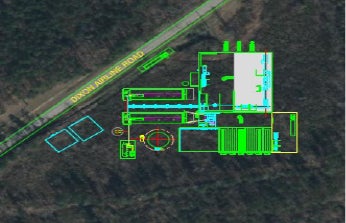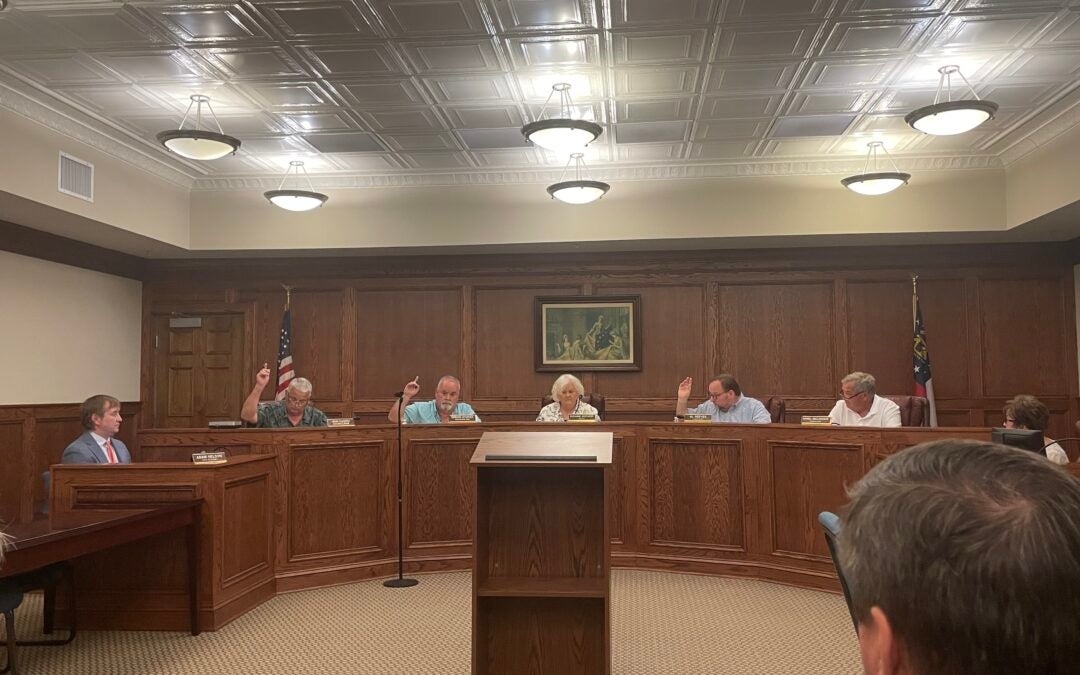by Dr John G. Ingersoll
On an 8.5-acre parcel of land at 1680 Dixon Airline Rd. in Augusta, a state-of-the art project, the Augusta bio-refinery, is under development by Renovatio Solutions LLC (RSL). This project entails the conversion of organic wastes via a biological process, known as anaerobic digestion, into renewable natural gas (RNG).
Renewable natural gas is an advanced biofuel covered under the Renewable Fuels Standard (RFS), which also includes bioethanol and biodiesel as two other such fuels. Misconceptions about the nature of the project have been reported in recent local press articles that need to be addressed and be corrected.
First, the Augusta Bio-refinery is not a biomass project. The latter typically employs thermochemical processes, invariably combustion, to extract the energy of wood and other organic wastes as heat, and from there, generate steam and electricity. The Augusta bio-refinery employs anaerobic digestion (AD) to extract the energy of organic wastes in the form of biomethane or RNG.
Anaerobic digestion is a series of biological processes in which microorganisms break down biodegradable material in the absence of oxygen. These processes occur normally in nature. The digestive system of cows/ruminants being a prime example. The decomposition of wastes in a landfill constitutes another example. The controlled application of these processes in a plant setting such as the Augusta bio-refinery constitutes the most efficient way to use organic wastes to generate several marketable products in the economy. In this regard, our wastes become a resource, i.e., the food of the microorganisms, which in turn produce their wastes, i.e., biomethane, that is then used in our economy. Thus, the controlled application of anaerobic digestion confers also benefits to the environment.
Second, concerns about air emissions and water pollution from the operation of the Augusta Bio-refinery have been articulated by well-intentioned citizens who seem to conflate this project with a biomass project burning wood wastes. The Augusta bio-refinery, as proposed, is shown above in a generic 3-D schematic of the plant.

A brief explanation as to how the plant would operate ought to allay the concerns about air emissions and water pollution. The plant feedstock materials comprised of the organic portion (food, green/yard, paper, etc.) of municipal solid wastes and woody wastes from a nearby lumber company are brought via truck into the processing building (right front), which is maintained at a negative pressure. Outside air enters this building continually and is exhausted to the outside via a biofilter, whose function is to destroy all the odors (chemical compounds) that are released.
The feedstock materials are cleaned of impurities, are reduced in size, are homogenized with the addition of mostly plant wastewater and are then pumped into the two digesters (middle left). The removed impurities (plastics, metals, glass, etc.) are stored temporarily inside the processing building until they are taken away via truck. The digesters are sealed to the outside as AD only functions in the absence of air (oxygen). The generated gas, called biogas, consists typically of 60% methane and 40% carbon dioxide, and is collected into the gas storage vessel (upper left). It then passes though an activated carbon filter to remove any chemicals and is then upgraded to 99% plus methane by removing the carbon dioxide via a three-stage membrane separation system.
The upgraded biogas as RNG is then injected into a nearby natural gas pipeline owned by Georgia Power. The injected RNG must meet stringent quality requirements imposed by the utility and is subject to continuous on-site monitoring. The separated-out from the biogas carbon dioxide is also collected, liquefied, stored on site and picked-up daily via truck by local industrial users.
The digestate (effluent of the digesters) is pumped back into the processing building where it is dewatered via screw presses and then dried via aeration for a period of about two weeks. The stabilized (dried) solids are then picked up by truck to be used as a landfill cover. The wastewater from the digestate is returned to the beginning of the process to be used as feedstock dilution water. A flare is used to burn temporarily any excess bio-methane as none is allowed to be released. The only air emissions would be from the boiler burning natural gas as necessary to maintain the digesters at the required temperature. Excess wastewater, if any, will be stored in on-site storage tank, while an on-site retention pond (upper left) is designed to catch all stormwater such that none ever leaves the plant site. Clearly air emissions are minimal, well below state and federal standards and water release is essentially zero. The project air and water permits issued by the state reflect these characteristics.
Third, the issue of social justice has also been mentioned because of the location of the project about less than a mile from the historic Spirit Creek Baptist Church. Because there are already several industrial facilities in the vicinity, the concern of the neighboring community would be fully justifiable if a biomass project burning construction and demolition wood wastes along with other wastes were to be built in the area. But the Augusta Bio-refinery is a Renewable Natural Gas project, as already described, with a negative carbon footprint because it captures essentially all the methane and the carbon dioxide that would naturally be released into the environment if the feedstock materials, instead of being diverted to the project, were to be sent to a landfill.
In fact, the Augusta bio-refinery is going to be the first project of its kind in Georgia based on the feedstock materials used and the second RNG producing project in the state out of some 230 similar RNG projects across the country (US Energy Information Administration database maintained by the Argonne National Laboratory: https://www.anl.gov/esia/reference/renewable-natural-gas-database and the RNG Coalition website: https://www.rngcoalition.com/). In a reversal of earlier trends, the local community will now include a state-of-art facility, namely, the Augusta Bio-refinery, thereby becoming a pioneer in environmental progress in the region and in the state.
The Augusta Bio-refinery is designed to produce annually 170 million cubic feet of renewable natural gas as an advanced transportation fuel to power buses and heavy-duty trucks thereby eliminating the use of 1.2 million gallons of fossil diesel fuel per year. It will also export about 4,000 tons per year of green carbon dioxide to replace fossil-fuel derived (combustion of natural gas) carbon dioxide in several industrial applications in the region.
The operation of the Augusta bio-refinery will result in the elimination of 2 million tons of carbon dioxide equivalent green-house gas emissions during a nominal 30-year project lifetime. Besides its environmental benefits, the Augusta bio-refinery will also generate economic benefits in terms of local, state, and federal taxes and will support over 100 temporary jobs during construction as well as about 50 direct and indirect permanent jobs in the area.
Dr. John G. Ingersoll has been involved with energy and environmental issues for over 25 years. His focus has been on the development of renewable energy resources and the implementation of alternative fuels for the transportation industry. He received a BS in Electrical Engineering from Syracuse University, a Ph.D. in Physics with a minor in Economics from the University of California, Berkeley and an executive MBA from the University of California, Los Angeles. He is the author and co-author of over 100 articles and several books. He has also received several patents, and several national environmental awards.








